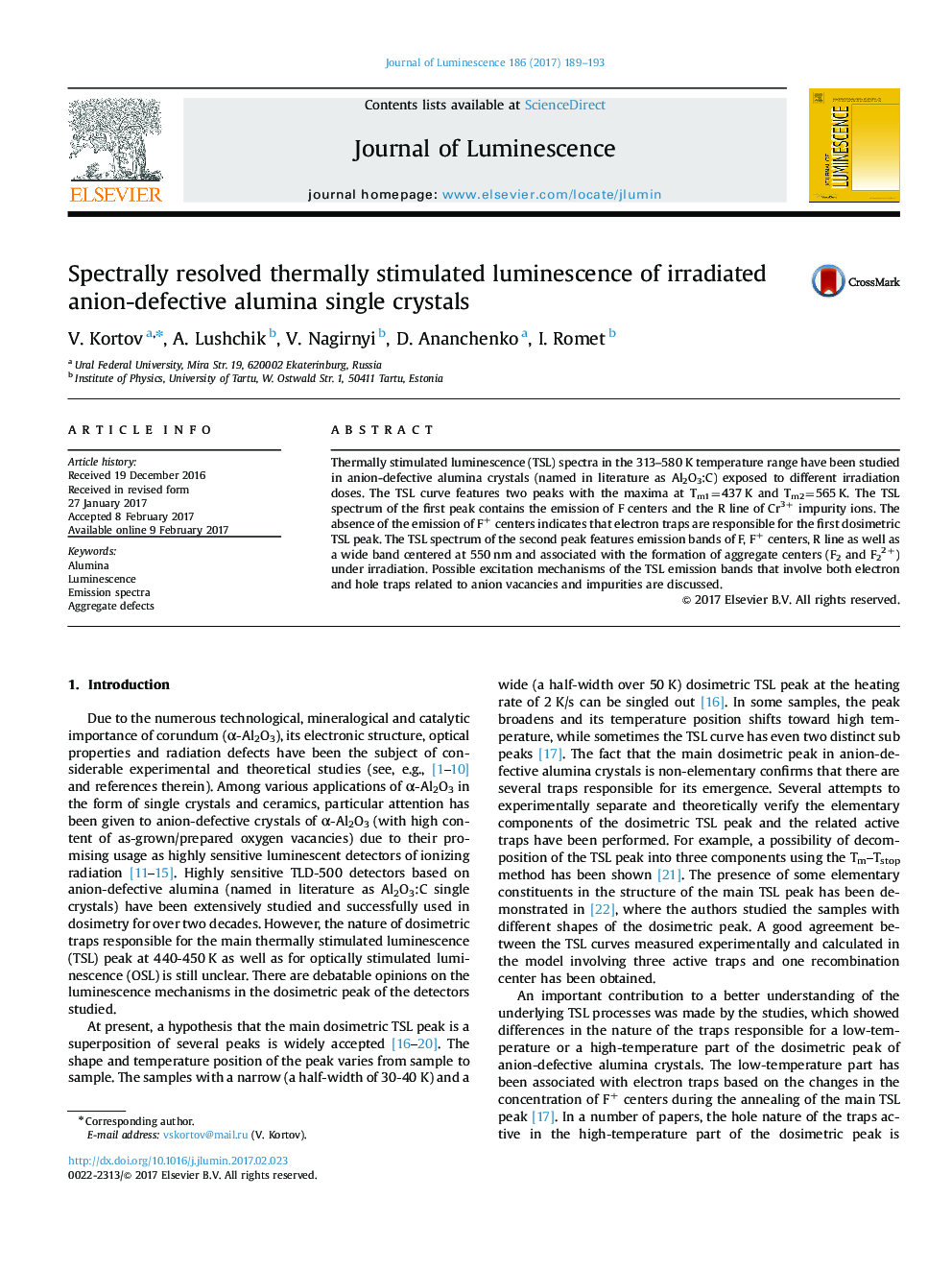| Article ID | Journal | Published Year | Pages | File Type |
|---|---|---|---|---|
| 5397845 | Journal of Luminescence | 2017 | 5 Pages |
Abstract
Thermally stimulated luminescence (TSL) spectra in the 313-580Â K temperature range have been studied in anion-defective alumina crystals (named in literature as Al2O3:C) exposed to different irradiation doses. The TSL curve features two peaks with the maxima at Tm1=437Â K and Tm2=565Â K. The TSL spectrum of the first peak contains the emission of F centers and the R line of Cr3+ impurity ions. The absence of the emission of F+ centers indicates that electron traps are responsible for the first dosimetric TSL peak. The TSL spectrum of the second peak features emission bands of F, F+ centers, R line as well as a wide band centered at 550Â nm and associated with the formation of aggregate centers (F2 and F22+) under irradiation. Possible excitation mechanisms of the TSL emission bands that involve both electron and hole traps related to anion vacancies and impurities are discussed.
Keywords
Related Topics
Physical Sciences and Engineering
Chemistry
Physical and Theoretical Chemistry
Authors
V. Kortov, A. Lushchik, V. Nagirnyi, D. Ananchenko, I. Romet,
